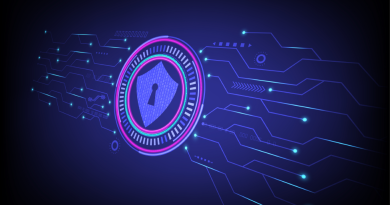What the Cybersecurity Landscape Looks Like in 2021


The COVID-19 pandemic shifted many enterprises into a new way of working, forcing a fast and swift implementation of new systems and policies to facilitate remote work. In the struggle to adjust and ensure smooth operations, many long-simmering cybersecurity risks and issues have come to the forefront. Our 2021 Security Predictions’ report discusses the security challenges brought about by the new workplace environments, migration to cloud applications, and plausible threats that should be anticipated by your organization.
What will the cybersecurity landscape look like in 2021?
It is no surprise that the predictions for 2021 are all influenced by the current pandemic. In knowing the possibilities of what the future holds, you can better empower your enterprise to create an effective and comprehensive security strategy that can withstand change and disruption. So, let’s dive into where our security experts believe you may need to adjust.
Home offices will be the new criminal hub. Work is now done through home internet service providers over possibly unpatched routers and machines. We predict that cybercriminals will be selling access to hacked routers, giving threat actors an avenue into home networks, which will become the launch point to gain a foothold into corporate networks.
The COVID-19 pandemic will be fertile ground for malicious campaigns. In 2021, the use of fraudulent emails, spam, and phishing attempts will continue, but with a twist. We predict that the social engineering lures will shift to vaccine-related issues and other health response efforts.
Hybrid environments will be a risk for organizations. Given that work and personal data are co-mingling on devices and in the cloud, some organizations might find it challenging to manage compliance with data processing rules and data storage guidelines. In line with storage concerns, with many health organizations and pandemic-response teams needing to access and store personal data to manage the spread of the virus, these databases—in the data center and in the cloud—are ripe targets for malicious actors and need to be given extra care.
Exposed APIs in enterprise and cloud applications will be the next attack vector. APIs are integral for most businesses’ operations, but security for them is still emerging. We predict that threat actors will use them as entry points into organizations, especially with the move of applications to the cloud, including existing and new cloud-native applications.
Enterprise and cloud application vulnerabilities will be targeted. We predict that cybercriminals will quickly integrate newly disclosed flaws and vulnerabilities in popular software into their campaigns, which means the patching window will narrow. Trading or selling exploitable known bugs will increase and sellers will package exploits specific to the threat actor’s needs. And with cloud environments being used to host larger amounts of sensitive data, they are much more valuable targets for criminals.
Future-looking cybersecurity solutions
Knowing what the future may hold, you need to look at strategies and tactics that can help combat these new and increased risks while minimizing the disruption to your organization. This means educating and training employees, maintaining strict access control, deploying patch management programs, and implementing stronger threat detection/security layers.
- Users must be informed of the tactics and possible attack vectors. Organizations should reinforce employees’ knowledge on threats and extend corporate best practices into the home by establishing security rules on telecommuting.
- Organizations should create security-focused company policies and an incident response plan that covers every perimeter of their operations. Be sure to refrain from putting implicit trust in assets or user accounts, regardless of the location.
- Implement foundational security and patching practices, ensuring users and your enterprise regularly update and patch applications and systems.
- Ensure advanced, round-the-clock threat detection and incident handling for cloud workloads, emails, endpoints, networks, and servers, with the help of dedicated internal or external security analysts. Gain better insights into attacks and prioritize security alerts through comprehensive threat intelligence and integrated solutions that deliver more value with reduced complexity.
Learn more about these security predictions and mitigation tactics in our full report to continue to be your most resilient in 2021: https://bit.ly/TurningTheTide2021
Read More HERE



